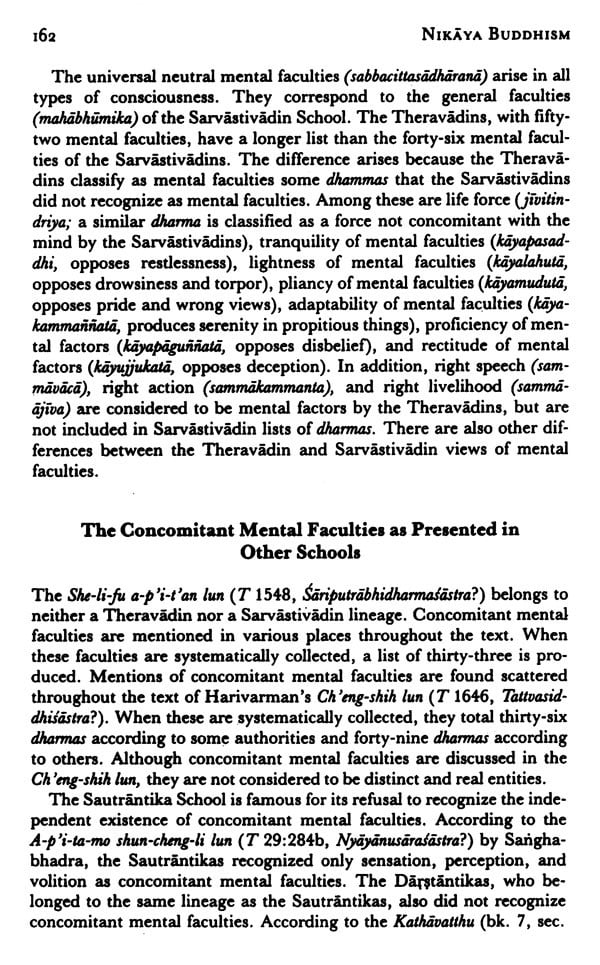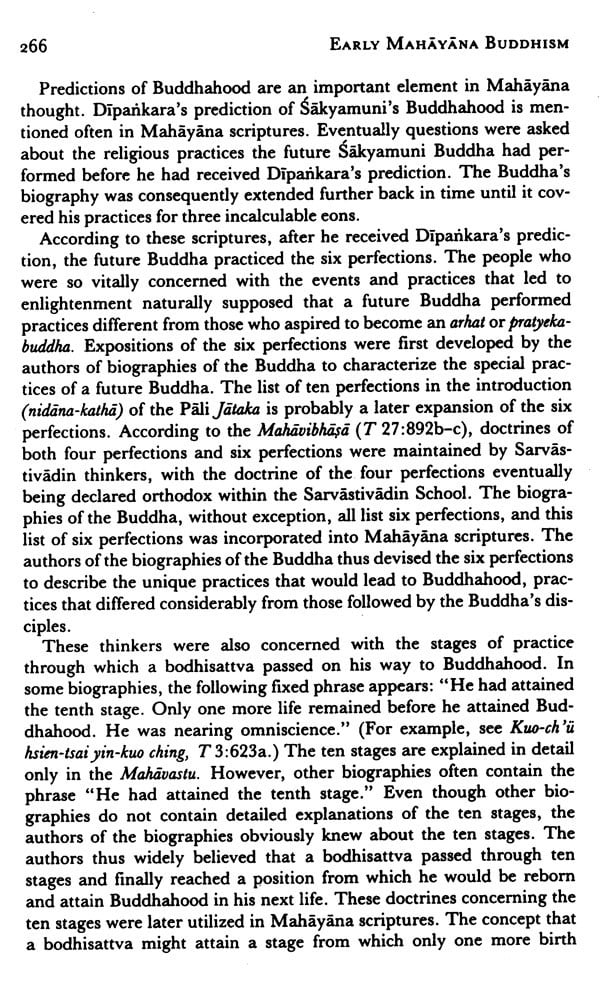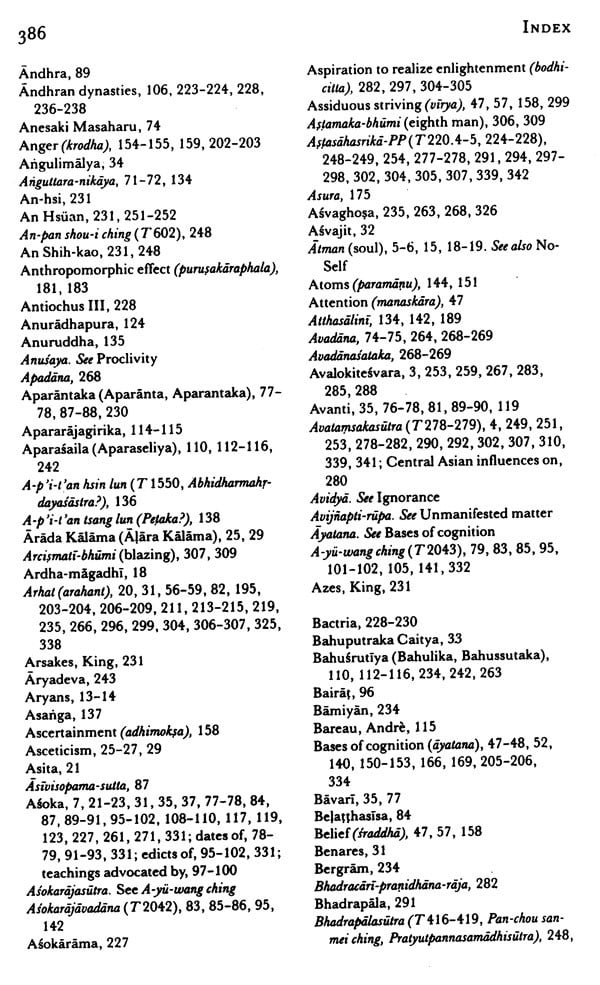
A History of Indian Buddhism (From Sakyamuni to Early Mahayana)
Book Specification
| Item Code: | NBZ844 |
| Author: | Hirakawa Akira and Paul Groner |
| Publisher: | MOTILAL BANARSIDAS PUBLISHERS PVT.LTD |
| Language: | English |
| Edition: | 2007 |
| ISBN: | 9788120809550 |
| Pages: | 428 |
| Cover: | HARDCOVER |
| Other Details | 9.00 X 6.00 inches |
| Weight | 580 gm |
Book Description
A History of Indian Buddhism, the summation of a lifetime of research on Indian Buddhism, is an exceptionally comprehensive discussion of Indian Buddhism, with detailed chapters on its history, doctrine and bibliography. The text also presents some of the debates on Indian Buddhism that have occurred in the Japanese academic community and emphasizes issues that have often been treated only in passing in India and the West. Hirakawa's extensive use of Chinese translations of Indian Buddhist sources and his references to Japanese studies of these works are particularly noteworthy. Finally, the book includes an extensive bibliography of Western scholarship compiled by the translator.
Hirakawa Akira (b. 1915), is Professor Emeritus of Indian Philosophy at Tokyo University. He has also taught at Waseda, Komazawa, and Tohoku universities. In 1983, he was elected President of the Japanese Association of Indian and Buddhist Studies, the most important academic organization for Buddhist studies in Japan. Hirakawa is the author or editor of over twenty books on Buddhism and has written more than 240 scholarly articles and reviews on Indian Buddhism. Among his most important books are studies of monastic discipline and the rise of Mahayana Buddhism. In addition, he has directed several major research projects in Buddhist studies, including a concordance of the Sanskrit, Tibetan, and Chinese versions of the Abhidharmakosa, and is currently in charge of the compilation of a Chinese-Sanskrit dictionary of Buddhist terms. He is widely recognized as one of the most eminent scholars of Indian Buddhism in Japan today.
Paul Groner received his Ph.D. from Yale University and is currently Associate Professor at the University of Virginia. He is the author of Saicho: The Establishment of the Japanese Tendai School and a number of articles on early Japanese Buddhism.
Among Japanese Buddhological scholars, Professor Akira Hirakawa has stood out, especially by his comprehensive studies of the Vinaya. Two of his works in this field have appeared in English-first, his collaboration with Professor P.V. Bapat translating the Chinese version of a Pali text (Poona, 1970); second, the Monastic Discipline for the Buddhist Nuns also from the Chinese (Patna, 1982). It is indeed a pleasure to include Hirakawa's third work for English readers in the Buddhist Tradition series. Paul Groner, who translated it from the Japanese original, has adequately described the contents in a factual sense.
I may add that the extraordinarily rich data in the Japanese language on the topic of Buddhism poses a serious challenge for a researcher in that language. Japanese Buddhist specialists do not know more of any Buddhist topic just by virtue of having that fine coverage in their language. One must make intelligent use of the resources, as does Professor Hirakawa when he carefully selects the relevant material and properly presents it. He therefore shows Japanese researches by himself and others in the best light. Some of the discussed topics are controversial. The reader is privileged to have the mature views of this senior specialist on all these Buddhist topics.
BECAUSE BUDDHISM originated and developed in India, using the adjective “Indian” to describe it may seem unnecessary. When Buddhism spread beyond India to Southeast Asia, Tibet, China, Japan, and other lands, certain aspects of Buddhism were emphasized in each locale, generating a wide variety of interpretations and practices. Buddhism was adapted to meet the requirements of the people of each area, resulting in a wide variation of interpretations. Indian Buddhism, too, had unique characteristics not emphasized in other regions. Thus, the term “Indian Buddhism” is often used today to distinguish it from the Buddhism of other countries.
When Indian Buddhism is compared to Chinese and Japanese Buddhism, differences in climate and geography are seen to affect religious practice; those adaptations in practice brought about changes in doctrine. In contrast, the countries where Theravada Buddhism is practiced-such as Sri Lanka, Burma, Thailand-have climates and geographies resembling those of India more than those of China and Japan. As a result, Theravāda religious practice is much closer to Indian Buddhism than to East Asian Buddhism.
A brief survey of the development and geographical spread of Indian Buddhism reveals much about the universal qualities and the distinctive characteristics of Indian Buddhism, as well as providing an overview of its development. Buddhism was founded in the fifth century B.C.E. by Śākyamuni, who was born in a region of northern India and Nepal controlled by the Sākya tribe. After he decided to become a religious mendicant, he traveled to the country of Magadha in central India, south of the Ganges River, where he performed religious austerities. When he was approximately thirty-five years old, Sākyamuni realized enlightenment. This experience, central to Buddhism, was described as “being enlightened to the undying” and “discovering the path to freedom from suffering.” Although humankind is afflicted by various types of suffering, the fear of death is the most basic, leading Sākyamuni to describe his experience in terms of the “undying.” Although Śākyamuni ceased to exist physically when he was eighty years old, his declaration of enlightenment expressed his confidence that his mind had realized eternal truths. The suffering present in all human existence has been a constant concern of mankind. Sākyamuni's discovery of an answer to this problem, a path of liberation from suffering, has been the most universally appealing characteristic of Buddhism. More than any other feature, it has enabled Buddhism to survive until the present.
In India, however, Buddhism disappeared. By briefly surveying the history of Indian Buddhism, some of its special characteristics as well as several reasons for its disappearance can be ascertained. At the time of Sākyamuni Buddha's death in the fifth century B.C.E., the Buddhist order consisted of small groups of mendicants in central India. Through the efforts of Sākyamuni's disciples, Buddhism spread to the south and west. In the third century B.C.E., after the conversion of King Asoka, Buddhism was soon promulgated throughout India. With the growth of the order and increases in the numbers of monks, disputes arose over the observance of monastic discipline and the interpretation of doctrine. The early order eventually divided into two schools: the progressive Mahāsanghika and the conservative Sthaviravāda (P. Theravāda). Additional schisms occurred until many schools existed and Buddhism entered its sectarian (Nikāya or Hinayāna) period.
The terms “eighteen schools” or “twenty schools” are found in many traditional sources that refer to Sectarian Buddhism, but the names of many more than twenty schools are known from inscriptions. Of these schools, the Theravāda, Sarvāstivāda, Sautrāntika, Sammatiya (all of Sthaviravāda lineage), and the Mahāsanghika schools were the most important. By the beginning of the common era, Mahāyāna Buddhism had also begun to develop. Mahāyāna (great vehicle) Buddhists criticized the adherents of Nikāya Buddhism by calling them “Hinayāna" (inferior vehicle) Buddhists, a deprecatory term applied especially to Sarvāstivādins.
**Contents and Sample Pages**



















